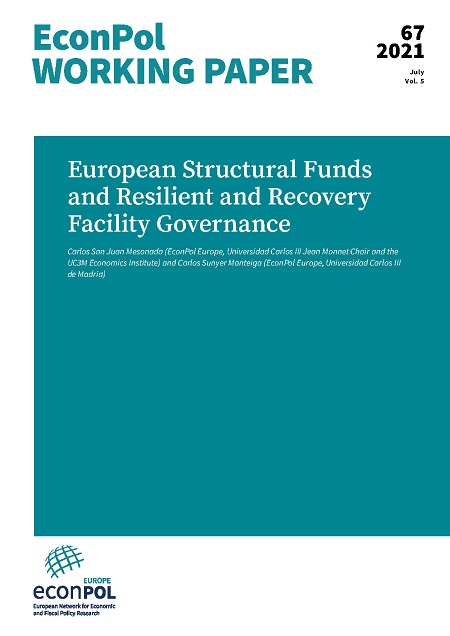European Structural Funds and Resilient and Recovery Facility Governance
The implementation of recovery funds under the EU’s Covid-19 recovery program NextGenerationEU should be aligned with business cycle phases. This could ensure that financial support will have the most even and efficient impact across regions. This is one of the key conclusions derived from this EconPol Working Paper. The study analyzed the impact of the European Structural and Investment Funds on regional development over the period 1986–2018, identifying lessons for the EU's Covid recovery program NGEU. The study finds that European Structural and Investment Funds distributed between 1986 and 2018 had a positive impact overall on regional growth in the recipient regions: In the long run, an increase of 1% in the EU aid led to permanent increases of personal income around 0.03% - 0.04%. However, the research shows that the business cycle affects the speed of convergence of the regions. The funds were least effective during downturn phases, especially in the least developed regions. This effect can partially be attributed to lower absorption rates in these regions and liquidity traps. According to the research, one way to mitigate this effect is to ease co-financing requirements during economic downturn phases and to adapt funds to the business cycle phase.
The paper attempts to recover empirical evidence related to the European Structural and Investment Funds (ESIF) to promote growth for the management of the Recovery & Resilience Facility (RRF). We analyse the impact of the EU Cohesion Policy on regional development over the period 1986-2018, using dynamic panel data models. In doing so, we use a neoclassical Solow growth model, extending the current literature in at least three ways. First, we make use of a new dataset, which contains highly detailed data on regional commitments and payments of Structural Funds; secondly, we address the endogeneity via a difference GMM estimator; finally, we control for the spatial interdependence among regions via a Spatial Durbin model. We find that the Cohesion Policy fosters regional growth both in the short and long run, regardless of the Objective considered. The role of the business cycle in the speed of regional convergence is quantified. The funds’ effectiveness is hindered during the crisis, especially in the least developed regions, partly due to lower absorptive rates. Furthermore, human capital and quality of government are crucial growth determinants necessary for improving the performance of the Structural Funds. Finally, we discuss if the combination of ESIF & RRF funds will be appropriate for accelerating the post-pandemic recovery versus the financial recession recovery.
Carlos San Juan Mesonada, Carlos Sunyer Manteiga: "European Structural Funds and Resilient and Recovery Facility Governance", EconPol Working Paper 67, July 2021
